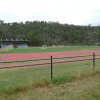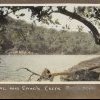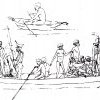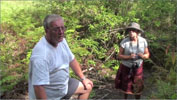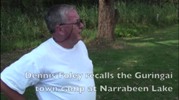1940s
William de Serve, a Gai-mariagal man born on Barrenjoey, is living in several camps along the Hawkesbury River making a living by selling his fishing catch at Brooklyn. He is also known at Coal and Candle Creek and at Narrabeen. Gai-mariagal people are living at Narrabeen Lakes on what is now the NSW Sports Centre. The community includes relatives of Dennis Foley. In the 1950s Dennis visits Narrabeen Lakes regularly with his uncles or his mother or grandmother, who lives at Curl Curl, bringing provisions like a bag of flour or a cake. (Read 2000; Foley 2001)
1940
After World War I and II large numbers of reserves are revoked for provision of “Soldier settlers” blocks for ex servicemen. It was still believed that Aboriginal people were a “dying race” and thus would not require any land.
1943
William de Serve, a Gai-mariagal man born on Barrenjoey, is living in several camps along the Hawkesbury River making a living by selling his fishing catch at Brooklyn. He is also known at Coal and Candle Creek and at Narrabeen. Gai-mariagal people are living at Narrabeen Lakes on what is now the NSW Sports Centre. The community includes relatives of Dennis Foley. In the 1950s Dennis visits Narrabeen Lakes regularly with his uncles or his mother or grandmother, who lives at Curl Curl bringing provisions like a bag of flour or a cake. (Read 2000; Foley 2002)











